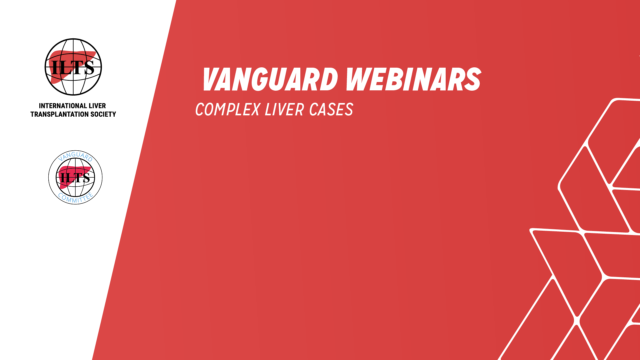What we´re reading… December 2022
The December issue of Transplantation, the official Journal of ILTS and the Transplantation Society, is out now. A must-read for anyone working in the field of liver transplantation.Free access for ILTS members!
Article selections by Ryan Chadha, Sadhana Shankar, Alexandra Shingina, Eleonora DeMartin, Carmen Vinaixa, Youngin Yoon, and Madhukar S Patel
HEPATOLOGY
The Lancet Gastroenterology and Hepatology
Development and validation of the Gender-Equity Model for Liver Allocation (GEMA) to prioritise candidates for liver transplantation: a cohort study
Background: The Model for End-stage Liver Disease (MELD) and its sodium-corrected variant (MELD-Na) have created gender disparities in accessing liver transplantation. We aimed to derive and validate the Gender-Equity Model for liver Allocation (GEMA) and its sodium-corrected variant (GEMA-Na) to amend such inequities. More
Transplantation
Liver Transplantation for Porto-Sinusoidal Vascular Liver Disorder: Long-term OutcomeBackground and aims.
Porto-sinusoidal vascular liver disorder (PSVD) is a rare disease that occasionally requires liver transplantation (LT), despite usually presenting preserved liver function. There remains a paucity of data pertaining to LT in PSVD. The aim was to identify features associated with post-LT outcomes in PSVD. More info
JHEP Reports
Inflammatory conditions play a role in recurrence of PSC after liver transplantation: An international multicentre study
Background & aims: Liver transplantation (LT) for primary sclerosing cholangitis (PSC) is complicated by recurrence of PSC (rPSC) in up to 25% of recipients. Recurrence has been shown to be detrimental for both graft and patient survival. For both PSC and rPSC, a medical cure is not available. To predict and ideally to prevent rPSC, it is imperative to find risk factors for rPSC that can be potentially modified. Therefore, we aimed to identify such factors for rPSC in a large international multicentre study including 6 centres in PSC-prevalent countries. More info
SURGERY
The Lancet Gastroenterology and Hepatology
Enhanced recovery for liver transplantation: recommendations from the 2022 International Liver Transplantation Society consensus conference
There is much controversy regarding enhanced recovery for recipients of liver transplants from deceased and living donors. The objectives of this Review were to summarise current knowledge on individual enhanced recovery elements on short-term outcomes, identify key components for comprehensive pathways, and create internationally accepted guidelines on enhanced recovery for liver-transplant recipients. More info
Annals of Surgery
Application of Proximal Splenic Vein Embolization to Interrupt Complicated Large Splenorenal Shunts in Adult Living Donor Liver Transplantation
Objective: The aim of the present study is to evaluate efficacy and safety of proximal splenic vein embolization (PSVE) for liver transplant recipients having complicated large splenorenal shunts (SRS). More info
International Journal of Surgery
Comparison of surgical outcomes and learning curve for robotic versus laparoscopic living donor hepatectomy: A retrospective cohort study
Background: Both laparoscopic living donor right hemihepatectomy (LLDRH) and robotic living donor right hemihepatectomy (RLDRH) have been developed for minimally invasive donor hepatectomy (MIDH), although comparative analysis between the two surgical modalities is lacking. This study aims to compare surgical outcomes of LLDRH and RLDRH at a single institution. More info
ANESTHESIOLOGY AND CRITICAL CARE
Transplantation
Prevention and Management of Chronic Postsurgical Pain and Persistent OpioidUse Following Solid Organ Transplantation: Experiences From the Toronto General Hospital Transitional Pain Service
Background: With >700 transplant surgeries performed each year, Toronto General Hospital (TGH) is currently one of the largest adult transplant centers in North America. There is a lack of literature regarding both the identification and management of chronic postsurgical pain (CPSP) after organ transplantation. Since 2014, the TGH Transitional Pain Service (TPS) has helped manage patients who developed CPSP after solid organ transplantation (SOT), including heart, lung, liver, and renal transplants.
Methods: In this retrospective cohort study, we describe the association between opioid consumption, psychological characteristics of pain, and demographic characteristics of 140 SOT patients who participated in the multidisciplinary treatment at the TGH TPS, incorporating psychology and physiotherapy as key parts of our multimodal pain management regimen. More info
Journal of cardiac surgery
The association of pre‐transplant atrial fibrillation with in‐hospital outcomes in patients undergoing orthotopic liver transplantation: A propensity score matching analysis
Introduction: In this study, we sought to evaluate the prevalence and association of pre-transplant atrial fibrillation (AF) on 30-day postoperative outcomes in patients undergoing orthotopic liver transplant (OLT). More info
Anesthesia and Analgesia
Incidence of Postreperfusion Hyperfibrinolysis in Liver Transplantation by Donor Type and Observed Treatment Strategies
Background: Hyperfibrinolysis is a possible complication during liver transplantation, particularly immediately after reperfusion.
Methods: We performed a retrospective study to examine the incidence, treatment, and resolution of postreperfusion hyperfibrinolysis in patients undergoing liver transplantation at Duke University Hospital from 2015 to 2020. More info







